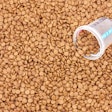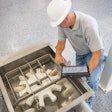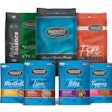The question is not whether you've had ISO training," says Dr. David Rosenblatt, managing director of PDCA Training Solutions, "but whether you know how to do your job effectively. Some people learn very little in training." He was speaking at Petfood Focus on Safety 2008 about good purchasing practices . It's a timely topic since some in our industry have recently realized the harsh consequences of not knowing enough about their suppliers.
The top priority
Of the many parameters affecting the selection of suppliers, safety must be top priority, states Rosenblatt. Issues of price and availability should not even be considered if the supplier has not been cleared by the food safety team. The following practices should be followed.
Auditing is a must . Authorization of a supplier should always follow at least one supplier audit. An organization can compile its own audit criteria or use existing audit programs. Audits should only be carried out by trained and skilled auditors. If the purchasing organization does not have a qualified person, then a professional auditor can be hired. In these cases it is recommended that somebody from the food safety team join the audit.
Score annually. Each supplier should be evaluated at least annually and preferably scored. The score should include sub-scores for various purchasing parameters, each weighted according to its importance. Audit results and safety performance should have a substantial contribution to the score. The score should determine the class of the supplier: A, B, C, etc. New suppliers should always be given a special class until they have proven themselves.
External certification best. Preference should be given to externally certified suppliers (see sidebar). Always make sure that the certificate is current. Certification can be revoked; therefore it is good practice to periodically review the status, preferably online.
Authorize the manufacturer . Always authorize the manufacturer. In our industry there are many brokers, reps and agents. A food safety audit should be carried out at the manufacturer's premises, even if you aren't purchasing directly from the company.
Auditing frequency. The frequency and extent of supplier audits should be planned based on two inputs: the supplier's past performance and the risk associated with the product being purchased. The risk of the product being purchased comes from your HACCP analysis.
Serious about safety
It has been said that those who fail to prepare, should prepare to fail. Establishing, implementing and maintaining good purchasing practices will contribute to product safety as long as these practices are determined based on HACCP and as long as our suppliers understand that we are serious about petfood safety.


.jpg?auto=format%2Ccompress&fit=crop&h=167&q=70&w=250)















